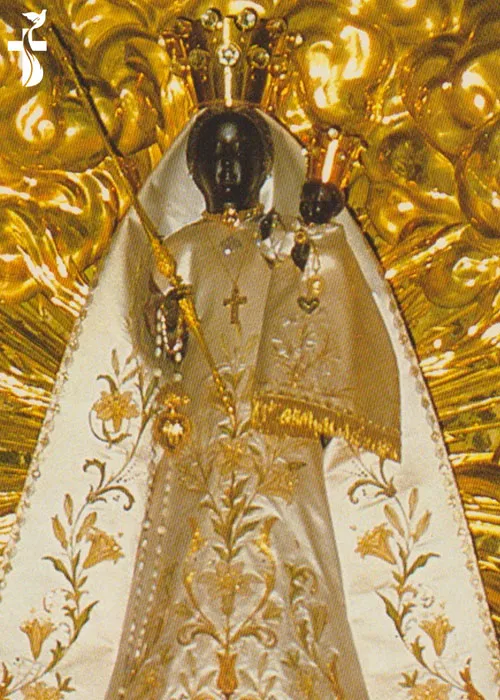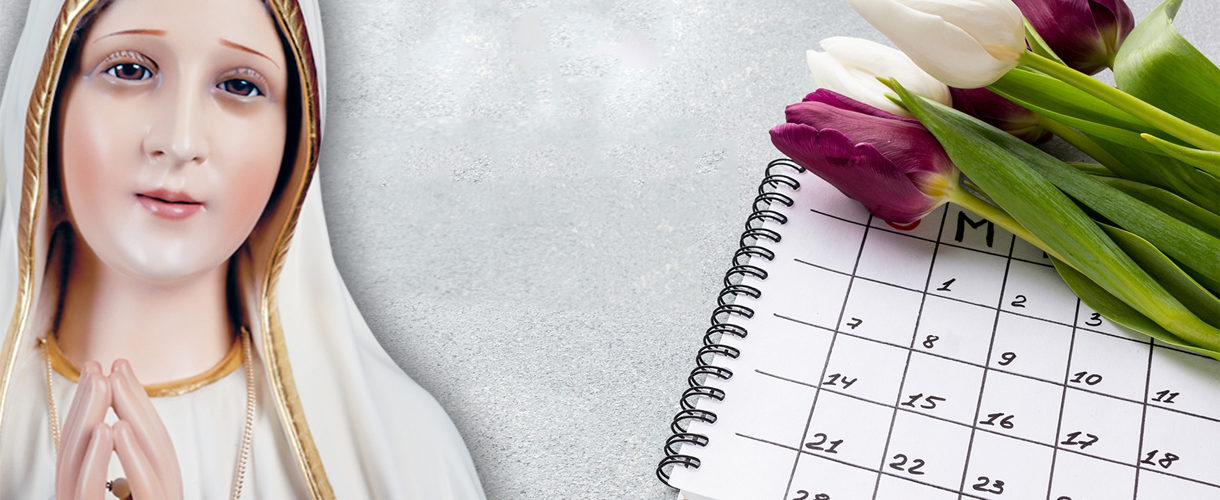
Our Lady Of Einsiedeln
Country : Switzerland
Year :
Not very far from the Swiss city of Zurich stands the village of Einsiedeln, small in size, but large in importance. The name of the village means “hermitage” and refers to the very early Middle Ages when Saint Meinrad hit upon this spot in the search through the Gloomy Forest or Wood, for a quiet place where he could build a cell and meditate and pray, far from the noise and distraction of the world. St. Meinrad’s cell then became a place of pilgrimage, and the clear woodland spring in which he quenched his thirst became a fountain of miraculous power.
In the fifteenth century when the good hermit had long been done to death by two villanous thugs, a chapel was built on the site of his ruined cell and in the chapel was placed a simple wooden statue of the Holy Virgin and her Child. In the centuries that followed, the Madonna of Hermits or of Einsiedeln turned black, and from then on her miraculous powers to heal the sick and the crippled became firmly established. A great convent sprang into being around her, a vast complex of buildings housing many hundreds of monks. A new chapel of Grace was finally built for her in the most elaborate baroque style, and a huge church constructed over it, protecting it as a very percious and wonderful thing. This Chapel of Grace stands of course on the site of the former chapel which had been built where the ruins of St. Meinrad’s cell had stood.
The convent became the residence of the highest princes of the Church, the repository of all that was rare and beautiful in illuminated manuscripts, gold and silver church plate, painting, and enbroidery. During the First World War, when a change of residence for the Pope was discussed, it was Einsiedeln which was chosen to receive him in case of necessity.
The doorway and pillars near the Chapel of Grace are today hung thick with crutches, canes and braces of all kinds, discarded by happy pilgrims who have been cured by Our Lady of Hermits. Every year thousands of pilgrims come to the village from all over the world. In olden times they came on foot. Now they arrive by train and proceed up the village street in a body, chanting appropriate music. Time was too, when they went up the cobbled street on their knees. Pausing in front of the mighty church with its imposing curved and colonnaded entrance, they drank from every one of the 12 spouts of St. Meinrad’s fountain, murmuring special prayers as they did so. Then into the church they streamed and knelt at the wrought iron screen which is in front of the chapel of Grace and behind which stands the Madonna and her Child, both robed in costly silks and crowned with gold and flashing jewels. A wave of religious fervor swept through the crowd, the singing grew ecstatic, tears rolled down some faces.
The organ notes pealed out–the service over, the pilgrims poured out of the church and across the street to the various inns waiting to receive and refresh them. The next day accounts were afloat of extraordinary cures that had been effected in the night, and as some details became known, the faithful rejoiced that in spite of our sceptical age, miracles are still wrought at St. Meinrad’s hermitage by Our Lady of Hermits at Einsiedeln.



